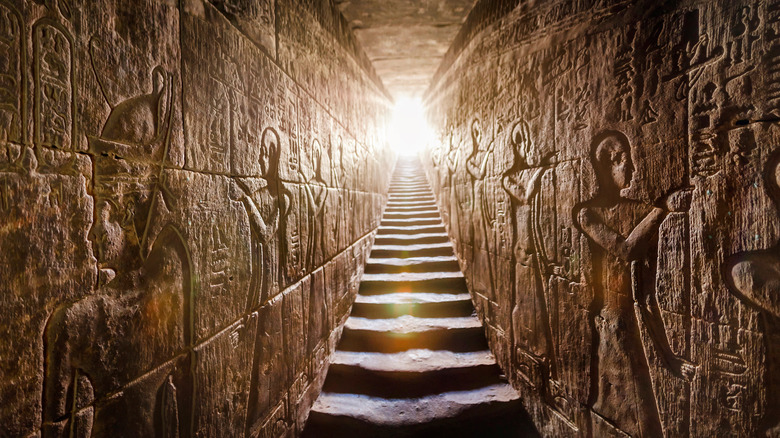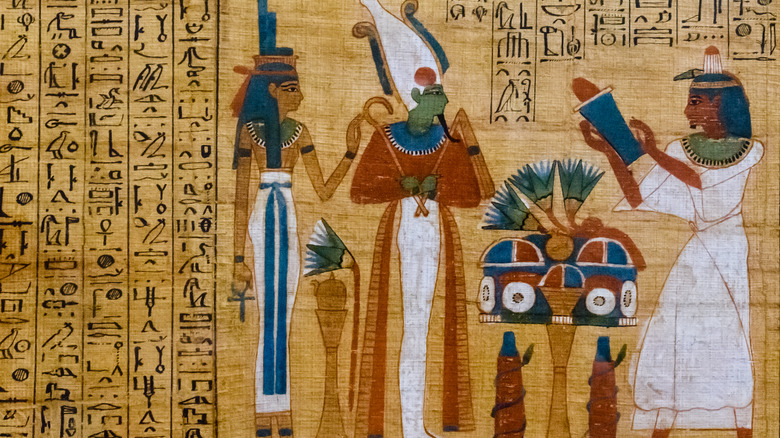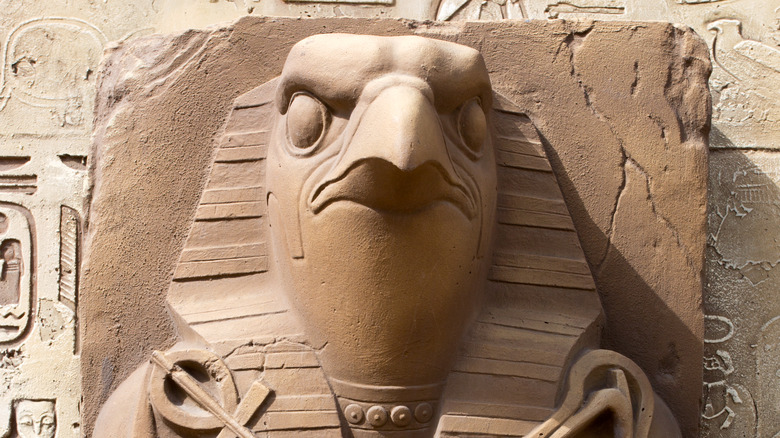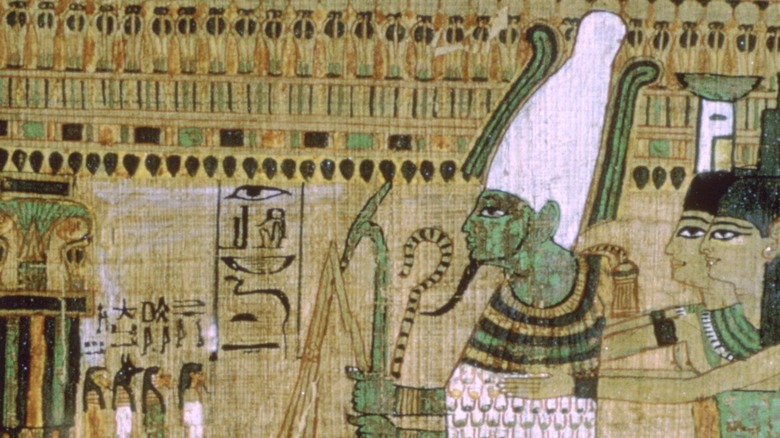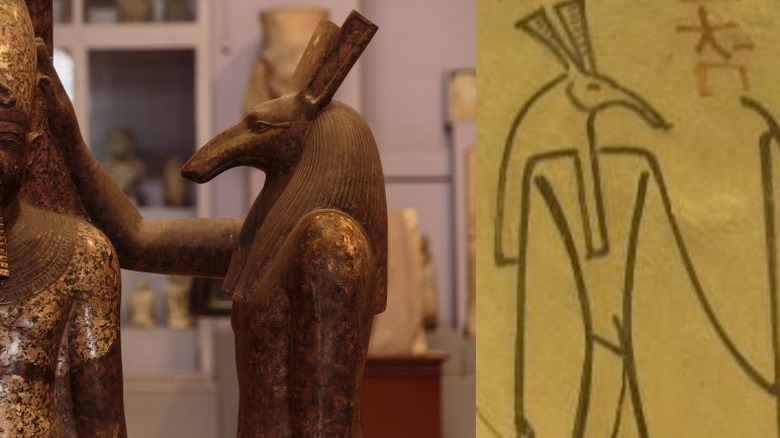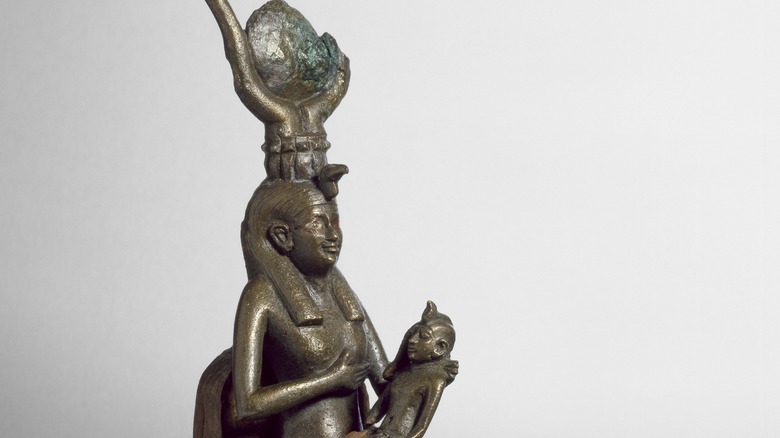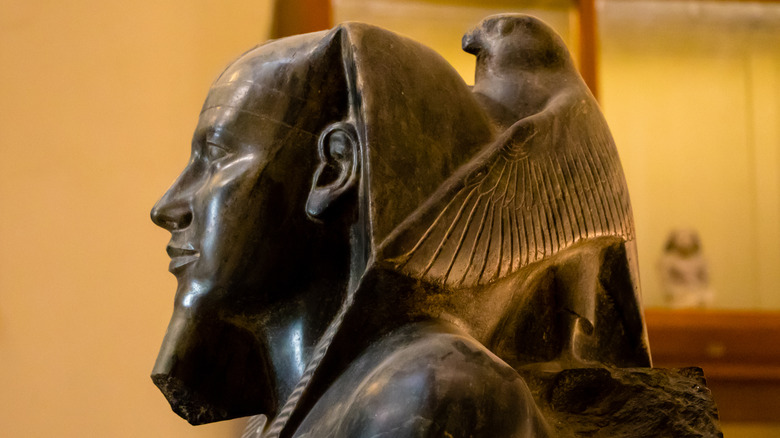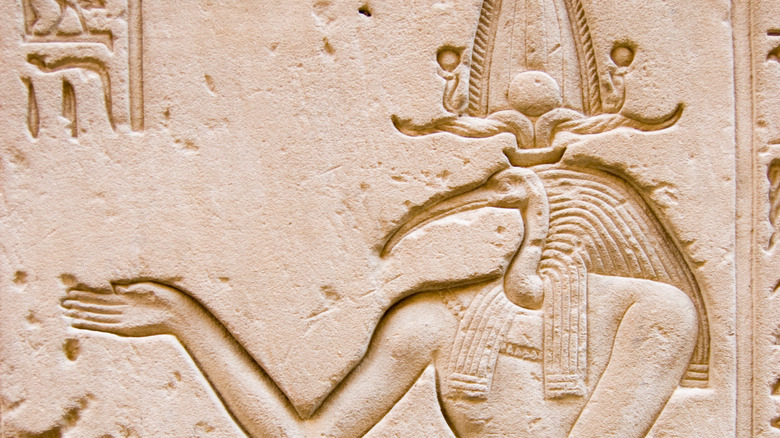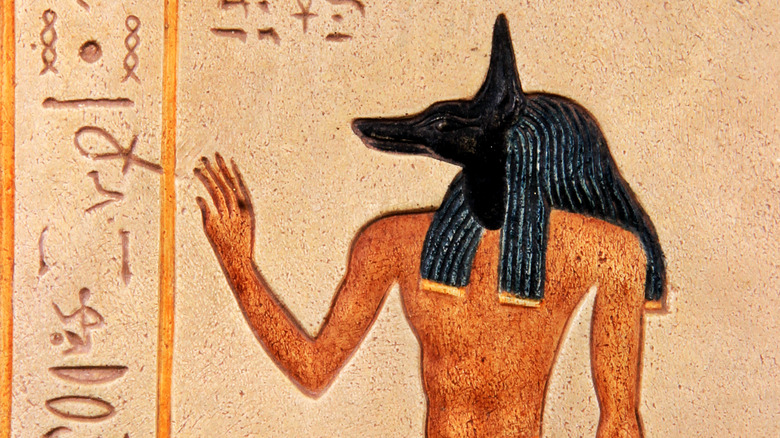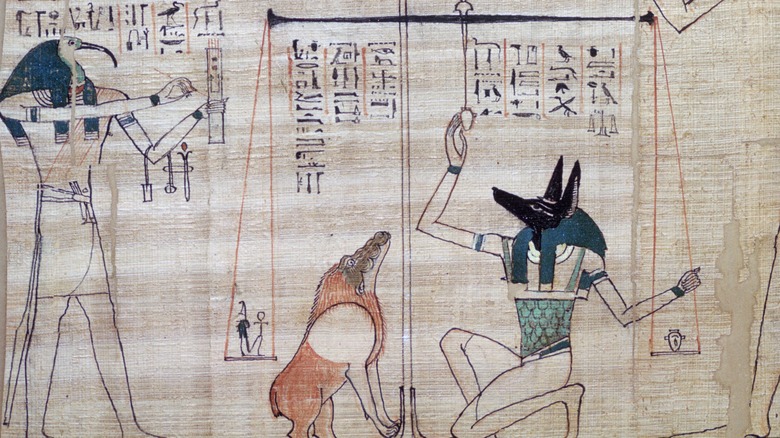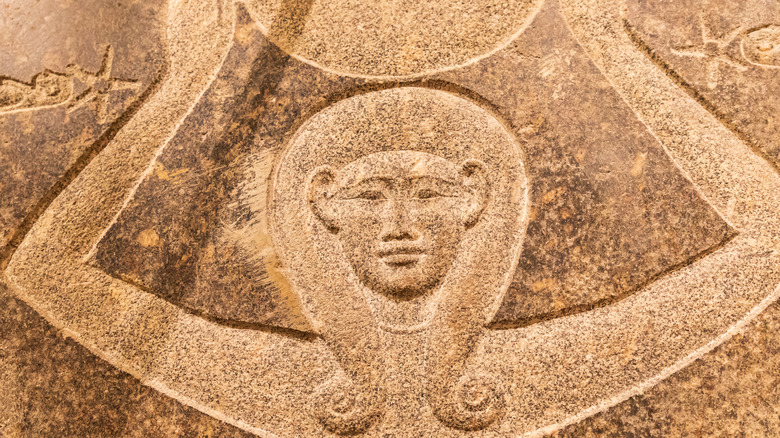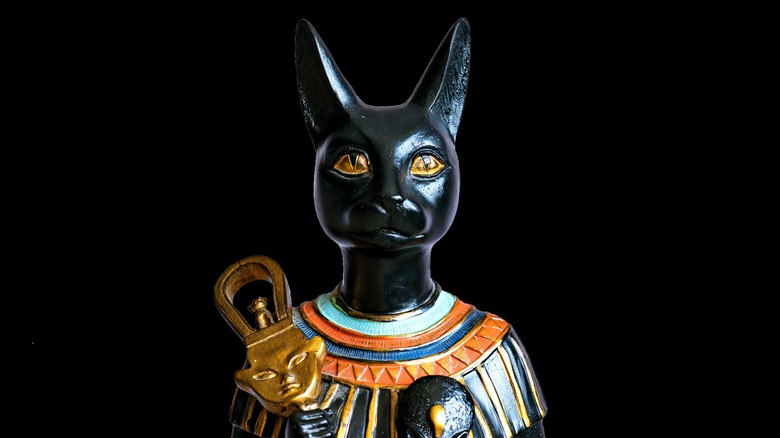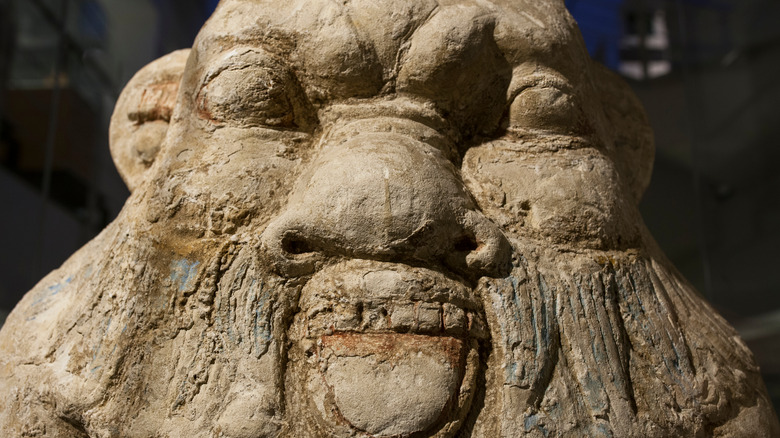The Egyptian Pantheon Of Gods Explained
The Ancient Egyptian universe was chaos from which the gods brought order. Everything from their rulers, natural disasters, births, and deaths were believed to happen under the guidance of the gods. It has been thousands of years since the Ancient Egyptian gods were widely worshipped, but they continue to fascinate people all over the world.
Egyptian gods were worshipped for over 3,000 years, and during this time beliefs evolved. As described in "Ancient Egyptian Religion," the importance of certain gods changed over the millennia they were worshipped. For instance, the sun god Ra was at one time the most important of all the deities, but over time his role changed, and other gods like Osiris became more important.
The massive pantheon of gods was depicted as extremely powerful, but not perfect. They were mysterious and changeable, and not necessarily good or evil. They had limitations and they could be hurt or even killed – but they didn't always stay dead. This is the Egyptian pantheon of gods explained.
Worshipping a large pantheon
There were more than 2,000 gods worshipped by the Ancient Egyptians. For the thousands of years that they were worshipped, the gods were a part of everyday life in Ancient Egypt. The historian Ancient Greek Herodotus (via Britannica) referred to the Egyptians as "the most religious of people." Much of what we know about the gods and their stories comes from writings by Greek and Roman writers, rather than the Egyptians themselves. However, there are some Egyptian sources: artifacts discovered by archeologists. The massive tombs built by Ancient Egyptians to honor their dead contained art and texts that give hints to what they believed and the way that they worshiped.
As described in "Ancient Egyptian Religion," there were rituals associated with worshipping these gods. Impressive temples were constructed to honor specific ones, which were then sites for the rituals performed by the priests who cared for images of the patron god. Some involved revering animals that represented the gods. It is believed that reenactments of myths were performed.
However, common people did not worship in the temples. Much about their relationship to the many, many gods is unknown, but it is believed that there were great festivals that all could attend. Some also consulted oracles, who used the images of the gods to determine the truth, the future, and just resolutions to conflicts.
Ra
The god Ra created himself, and rose from the ocean of chaos on the primeval hill. He was so powerful that all he had to do was speak the name of something and it would come into existence. As detailed in "Tales of Ancient Egypt," Ra had a secret name – presumably the first thing ever spoken as he created himself. This made him the most powerful being in the universe. He named everything: the wind, the rain, the other gods, and finally humans, and each came into being. Ra was usually depicted as a man with the head of a falcon, but he was also the sun, and as he traveled across the sky he created the first day.
Finally, Ra took the form of a human being and descended to Egypt to rule the people he created as the first pharaoh. He reigned for thousands of years.
As described by Britannica, Ra was so important that the 4th dynasty kings were called "Son of Ra." By the 11th century, he had merged with the god Ammon, another Egyptian king god, creating Ammon-Ra: the most important god for over a thousand years.
Osiris
Osiris was one of the ancient world's most important gods. It was believed that he was responsible for the regular flooding on the Nile River, which made the land fertile. He was also a god of death. The duality of his nature was reflected in the mythology about him – he was once murdered, but continued to rule in a new form.
According to "Tales of Ancient Egypt" Osiris' birth was accompanied by many symbolic miracles. The sky itself seemed to call out, "The Lord of All comes forth into the light!" At the Thebes Temple of Ra, a voice in the temple told the people to announce the birth of the savior of mankind and Egypt's greatest king. A woman was drawing water from a well and suddenly was overcome with prophecy, and shouted out, "Osiris the King is born!" But Osiris would be betrayed and murdered by his brother Set. As stated by Britannica, despite Osiris' immense power, resurrection was impossible. Instead, he ruled as the Lord of the Dead. According to the UCLA Encyclopedia of Egyptology, the dead could follow in his footsteps into the Underworld and join with the god.
He was frequently depicted as a mummy with a green face and was worshipped in a festival in which "Osiris Gardens" were built. The gardens were in the shape of the god and watered with the Nile. The new growth there was meant to symbolize the strength of Osiris.
Set
Set was a trickster god. He was in control of all things powerful and chaotic, including war, storms, and the desert itself. His form was no less unpredictable. The Ancient Egyptian gods are often associated with animals that represented some part of their nature, such as the cat for Bast or the falcon for Ra. Set was also depicted as a creature – but no one knows what it is. As described in "The Sacred Animal of the God Set," the Set Animal has a strange anteater-like face and tall rectangular ears.
It is believed that Set was a threat to Egypt because he might spread his desert over the country, stopping anything from growing. Egyptians made sacrifices to him out of fear. Set was not only a threat to civilization, but to the gods themselves – even the mighty Osiris. As described by The University of Texas at Austin, Set was Osiris' jealous brother. Eventually, he decided that he should kill Osiris. In some versions of the story, Set invited Osiris to a feast in his honor. There he tricked his brother into getting in a bejeweled chest, sealed it, and threw it into the Nile. In other versions, he transformed into the Set Animal and ripped Osiris apart. To ensure that his brother would never return he scattered the pieces of his corpse all over Egypt.
Set became the pharaoh of Egypt – but he hadn't reckoned with Osiris' wife.
Isis
Isis was Osiris' sister. Isis was taught by moon gods Khonsu and Thoth and, as described by "Tales of Ancient Egypt," she excelled at magic. Soon she had surpassed even her teachers, becoming the greatest magician in history. As an adult, Isis and Osiris married. She knew that Osiris was destined to be the pharaoh – but the powerful sun god Ra, who created the world, still ruled Egypt. Isis hatched a plan: she would learn Ra's secret name of power and then she could control him.
But first, Isis would have to create something of her own. She followed Ra and collected some of his spit, which she would use to create a new animal – the cobra. The cobra bit Ra. He summoned all of the gods to try to cure him. None of them could. Finally, Isis told him that she could cure him, but only by using his secret name. Isis did cure Ra – but from that day forward he no longer ruled on Earth, and instead traveled across the sky from East to West, every day.
Osiris assumed the throne and, with Isis as his queen, reshaped Egypt into a peaceful kingdom. After Osiris was betrayed and murdered by Set, Isis had to come up with another plan. A cobra wouldn't be enough to regain the throne. This time, she needed to create a son.
Horus
After murdering his brother, Set became Egypt's ruler. Isis grieved every day after Osiris was killed. However, as described by "Egyptian Mythology: A Guide to the Gods, Goddesses, and Traditions of Ancient Egypt," she had a plan. Isis and her sister Nephthys traveled across Egypt collecting the various bits of Osiris' body. With her magic, Isis put them back together and temporarily resurrected Osiris. That night, they conceived a child: Horus.
As described in Britannica, Horus was a god who often took the form of a falcon. His right eye was the sun and his left was the moon. Horus' childhood was difficult, because his uncle Set was abusive, both obsessed with him, as well as fearing that he would one day take the throne. Once he ripped out Horus' eye, but it was healed by Isis and Thoth.
As an adult, Horus rose up against Set and challenged him to a series of contests for the throne. They both transformed into hippopotamuses and ran at each other. They had a boat race (in which Horus tricked Set into trying to use a stone boat). Finally, Horus challenged Set in court. Osiris himself appeared in court and challenged Set for killing him. Horus became the ruler of Egypt.
Thoth
Thoth, the moon god who taught Isis her magic and healed the eye of Horus, was the inventor of all languages. He was often represented by the long-beaked ibis, but he could also take the form of a baboon. As noted by Britannica, he was at one time an important representative of the creator Ra, but then he told Isis how to defeat Ra by learning his true name. He also served Osiris in the underworld.
After death, Thoth greeted each Ka (spirit or soul) and led them to Osiris and Anubis. As described in "Tales of Ancient Egypt," a kind of trial commenced, in which the dead would swear that they were "without sin, without guilt, without evil," that they had been charitable to the less fortunate, and never insulted the gods.
After this, a test was performed to see if the dead had been truthful. Thoth watched the test and interpreted the results, calling out to Osiris whether or not the dead person was worthy of entering the afterlife.
Anubis
Anubis is one of the most famous Egyptian gods, and probably most associated with death and the afterlife. As described in "The Complete Gods and Goddesses of Ancient Egypt," Anubis is often depicted performing a ceremony known as the "Opening of the Mouth" ritual, which involves touching the eyes and mouth of the dead to allow them to eat, drink, and see in the afterlife. In Ancient Egypt, it was believed that if the body was not intact it impacted them in the afterlife, which made the destruction of Osiris' body even more horrific, and Isis' journey to restore the corpse even more vital. As noted by Worldbook, in some versions of the story it is Anubis who restores the pieces of Osiris' body.
Anubis is often depicted as a black jackal, and sometimes as a man with a jackal head. It is believed that this is because in Ancient Egypt jackals frequently scavenged by digging up shallow graves. People would pray to Anubis, the jackal god, to spare the graves of their loved ones.
Osiris might have been the king of the dead and had his body mummified, but Anubis was the god of mummification itself. In older stories, Anubis is the King of the Dead, but as the story of Osiris spread, Anubis' role changed. Thoth might be responsible for calling out the results of the test performed on the Ka (spirit or soul) of the dead, but it was Anubis who actually tested the dead.
Ammut
When the dead arrived in the afterlife, they underwent a special test to determine if they had been virtuous in life. If they were found wanting, they would have to face Ammut.
Anubis had a scale that he could use to judge the dead. As described in "Tales of Ancient Egypt," the dead's spirit (or Ka) was supposed to look identical to their living body, including their organs. When Thoth brought the dead to Anubis, he would remove the heart and put it on his scale. On the other side of the scale was a feather. If the heart was as light as the feather, the scale would remain balanced, and Thoth could call out to Osiris that the person was worthy. If it was heavy with sin, however, the scale would tip, and the heart would sink. If it sank too low it would be snatched by Ammut, the Devourer of Hearts.
As described in "The Complete Gods and Goddesses of Ancient Egypt," Ammut was a creature that was part lion, part hippopotamus, with a crocodile's head – the three most dangerous animals in Ancient Egypt. It's very likely that Ammut was never worshipped – she was a terrifying monster that was to be feared, not venerated. Believers did everything they could to be considered virtuous enough to enter the land of the dead and avoid being consumed by her.
Hathor
Hathor was one of multiple goddesses that have been associated with the creator god Ra. She is sometimes depicted as his queen or his daughter, and sometimes as an aspect of the god himself. Often this role is called "The Eye of Ra." As stated by Britannica, Hathor was a sky goddess representing all women, motherhood, and love. Unlike her feline sister Bast, she took the form of a cow.
One famous story about the Eye of Ra, retold in "Egyptian Mythology: A Guide to the Gods, Goddesses, and Traditions of Ancient Egypt," states that once she was so full of chaotic rage that she abandoned Ra and traveled to a faraway desert. Her fury was uncontrollable, and she killed every living thing she encountered. Without the protection of his female form, Ra was at risk of being defeated. So Thoth transformed himself into a baboon and followed the enraged goddess around, both entertaining and annoying her. He told her many stories, promised her that all the people of Egypt would make offerings to her, and led her to Egypt's capital city. When she set foot in the city, she reverted to her peaceful form –- the beautiful Hathor.
Some versions of the story describe the Eye of Ra as taking a lion form as she raged in the desert, which has led some to believe that it was not actually Hathor, but another goddess who was often in lion form: Bast.
Bast
Bast (sometimes called Bastet) is one of the most recognizable Ancient Egyptian deities. She is usually depicted in the form of a cat or a lioness, and often shown to be the daughter of Ammon-Ra.
As detailed by "Egyptian Mythology: A Guide to the Gods, Goddesses, and Traditions of Ancient Egypt," Bast was sometimes depicted as loving and motherly, and sometimes as merciless and vengeful. This violent version of Bast was frequently associated with funeral rites and medical rituals. Some texts refer to the "slaughterers of Bastet": the plagues and natural disasters set loose by the angry goddess. One ritual recommends avoiding getting the plague by pretending to be Bast's child.
As described by the American Research Center in Egypt, it's possible that Bast's two animal forms were inspired by the real animals that lived in the regions her cult was popular. In the early 3rd millennium, lions were a constant threat. Large cattle herds lived in these areas alongside prides of lions, so Ancient Egyptians would have frequently witnessed lionesses hunting. As cats became common pets in Egypt, Bast's image merged into a smaller feline and her nature became friendlier to humans.
Bes and the local gods
While the Ancient Egyptian pantheon is full of gods and goddesses that wield immense power, causing life-giving floods and devastating storms, ruling human civilization, and leading the dead to the afterlife, it is likely that the most worshipped gods were not as powerful. As explained in "The Complete Gods and Goddesses of Ancient Egypt," every house had small shrines to gods that were said to protect the community or even an individual.
One of the most common of these local gods was Bes (and his name is often applied to other local gods). As described by Britannica, Bes did not have an animal form, though he did sometimes have a bushy tail. He looked like a small, big-headed person with pop eyes, and a lolling tongue. Often he wore a feather crown. Some believe that his appearance was designed to frighten away evil beings, while others believe that he looked this way to make his followers smile.
